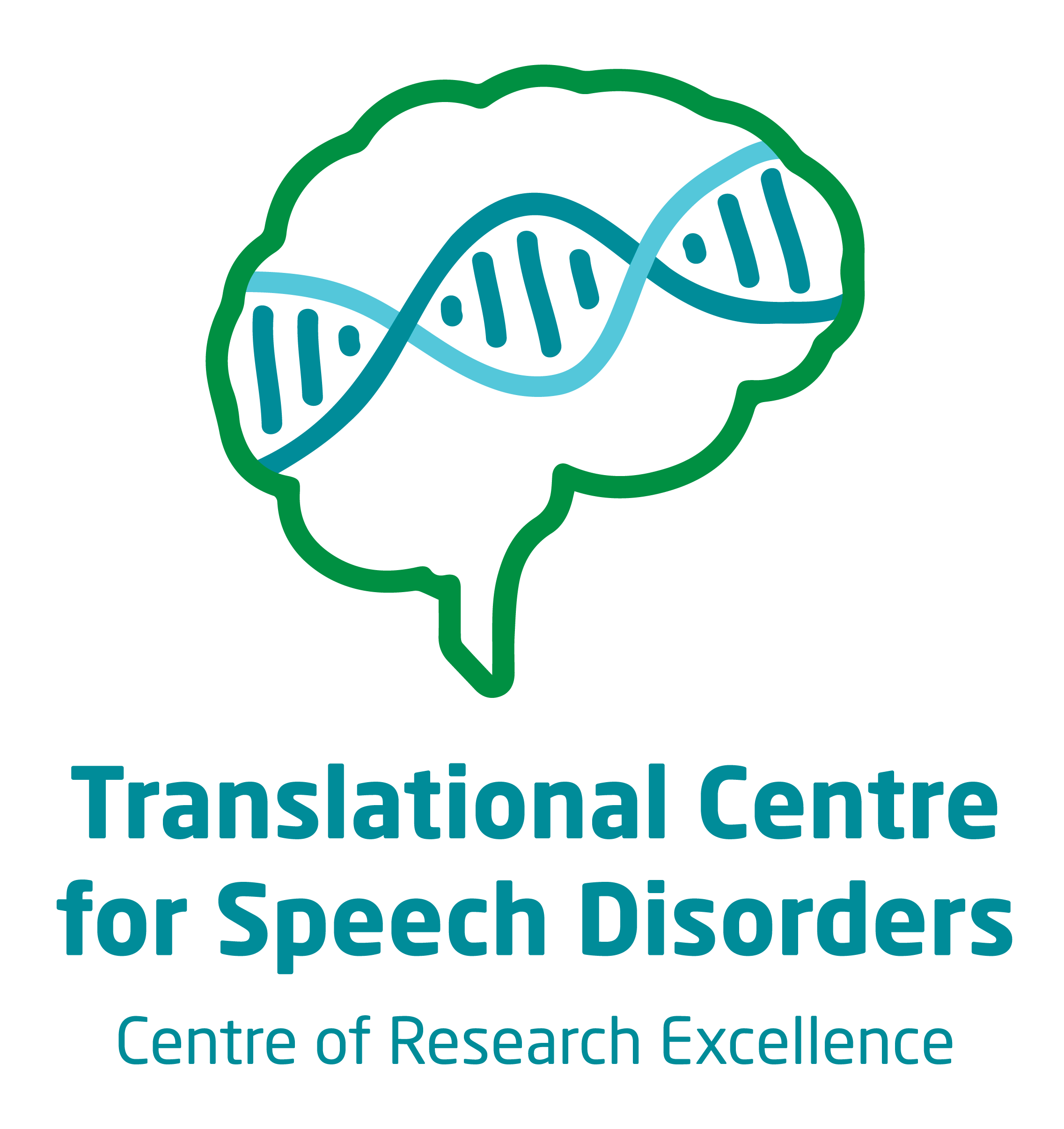Dravet syndrome
What is Dravet syndrome?
Dravet syndrome is a severe form of epilepsy which begins at around 6 months of age. Individuals with Dravet syndrome will experience a range of different types of seizures across their lifetime, beginning with fever-related seizures in infancy and other types which develop in early childhood.1 Seizures continue into adult life, however they may be less frequent and less severe than in childhood.2
Individuals with Dravet syndrome show a typical pattern of normal development until around 1 year of age. After this, their development slows or regresses. Each individual presents differently, so their course is hard to predict. Approximately 80% of individuals with Dravet syndrome have disease causing changes in the gene SCN1A gene.
Contact
For further information, do get in touch with the CRE Speech and Language team at:
Email: geneticsofspeech@mcri.edu.au
Phone: (03) 9936 6334
Frequently asked questions
Most individuals with Dravet syndrome will experience associated health or developmental conditions. These may be to do with their motor skills, learning, speech, or behaviour.3,4,5 Some common examples include:
- Difficulties with walking
- Ongoing movement and balance difficulties
- Ongoing speech and language difficulties
- Cognitive impairment and intellectual disability
- Behavioural issues such as hyperactivity, impulsivity, and poor concentration
- Sleeping difficulties
- Growth and nutrition issues
- Chronic chest infections
Individuals with Dravet syndrome will typically acquire single words in line with their peers, at around 12 months of age. Language development may slow after this point or they may experience loss of previously learnt words.1
Individuals with Dravet syndrome have unclear speech due to difficulty controlling the muscles for speech (known as dysarthria).6 Typical features include:
- Slurred and imprecise sounding speech
- Nasal sounding speech
- Breathy or effortful sounding voice
- Excess stress on unstressed parts of speech
- Speech that sounds monotonous
- Poor breath support meaning children speak in short phrases
They may also have delayed and atypical sound simplifications (phonological errors). This can reduce their intelligibility, making them difficult to understand. individuals may also experience language delay or impairment. This can affect the way they use words in speech, as well as how much they understand.
Further research is needed to determine how speech and language changes with age in individuals with Dravet syndrome. In one detailed study, adults were found to have more severely impaired speech than children. Most were very difficult to understand in conversation (moderately-severely unintelligible).6 This suggests that speech skills may worsen over time in Dravet syndrome, however we need to study further individuals to determine whether this is true.
Individuals with Dravet syndrome may or may not attend mainstream schools, depending on intellectual capabilities, how severe their symptoms are, and how much care they require. This is decided on a case by case basis.
Most individuals will require external support. If an individual does attend mainstream school, some important considerations include:
- Seizure triggers and how they can be avoided
- Education of school staff and teachers about responding to the individual’s seizures
- Availability of a one-on-one classroom aide
- Flexibility of the teacher and curriculum when the individual misses school due to seizures, illness, medical appointments, and so on
- Whether the individual requires a behaviour support plan (particularly if they experience changes in behaviour with changes in medications)
- Extent of learning difficulties
Individuals with Dravet syndrome have varying levels of speech and language, so there is no “one size fits all” approach to therapy. Therapies vary depending on individual ability and goals for the child and for the family.
Individuals who are minimally verbal or nonverbal may require training using alternative ways of communicating, such as picture boards or electronic devices.
The family may undergo training regarding how to best support the individual’s communication.
Individuals who have verbal speech that is hard to understand may require therapy to help improve their speech. Therapy may also focus on literacy (reading and spelling) to improve their access to the school curriculum.
Seizure types tend to change in adolescence and adulthood, with less prolonged and severe seizures. As the individual gets older, management focuses more on behaviour, sleep and comorbidities, including speech and language.7
Due to ongoing developments in treatment options and effective seizure control, there is evidence to suggest that more recently diagnosed cases of Dravet syndrome may have a less severe evolution into adolescence and adulthood.8
Similar speech features were noted across all individuals in a detailed cohort study.6 These individuals ranged in age from 4 to 28 years. Speech was characterized by imprecise articulation of speech sounds, abnormal nasal resonance, breathy or strain-strangled voice, and errors in pitch and prosody. Although the speech of the adults was more impaired and difficult to understand.
References
- Scheffer, I.E. (2012). Diagnosis and long-term course of Dravet syndrome. European Journal of Paediatric Neurology, 16, S5-S8.
- Jansen, F.E., Sadleir, L.G., Harkin, L.A., Vadlamudi, L., McMahon, J.M., Mulley JC, Scheffer, I.E., & Berkovic, S.F. (2006). Severe myoclonic epilepsy of infancy (Dravet syndrome): recognition and diagnosis in adults. Neurology, 67(12), 2224-2226.
- Lagae, L., Brambilla, I., Mingorance, A., Gibson, E., Battersby, A. (2018). Quality of life and comorbidities associated with Dravet syndrome severity: a multinational cohort survey. Developmental Medicine & Child Neurology, 60(1), 63-72.
- Rodda, J.M., Scheffer, I.E., McMahon, J.M., Berkovic, S.F., & Graham, H.K. (2012). Progressive gait deterioration in adolescents with Dravet syndrome. Archives of Neurology, 69(7), 873-878.
- Sinoo, C., de Lange, I.M., Westers, P., Gunning, W.B., Jongmans, M.J., & Brilstra, E.H. (2019). Behavior problems and health-related quality of life in Dravet syndrome. Epilepsy & Behavior, 90, 217-227.
- Turner, S.J., Brown, A., Arpone, M., Anderson, V., Morgan, A.T., & Scheffer, I.E. (2017). Dysarthria and broader motor speech deficits in Dravet syndrome. Neurology, 88(8), 743-749.
- Granata, T. (2011). Comprehensive care of children with Dravet syndrome. Epilepsia, 52, 90-94.
- Genton, P., Velizarova, R., & Dravet, C. (2011). Dravet syndrome: the long‐term outcome. Epilepsia, 52, 44-49.






